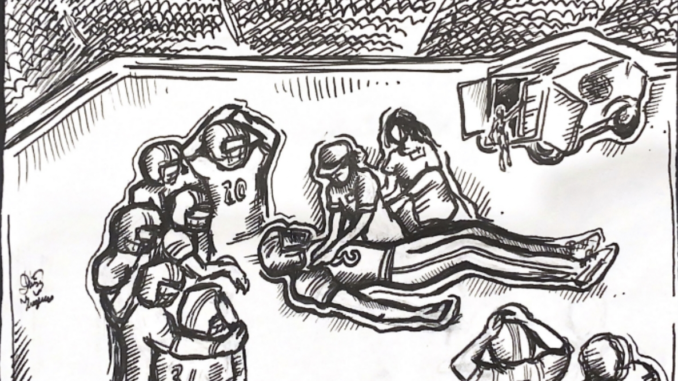
Staff Editorial
As cardiac arrest incidents are under the spotlight in America, many are questioning whether school systems are prepared for such an event on campus. Costa has automated external defibrillators (AEDs) positioned throughout campus, CPR/AED-certified staff, and proper protocols, providing a sense of safety for students and staff on campus.
On Jan. 2, 24-year-old Buffalo Bills NFL safety Damar Hamlin collapsed in a game against the Cincinnati Bengals, suffering from sudden cardiac arrest (SCA). After making a tackle, Hamlin immediately fell after getting up. CPR was administered immediately for nine minutes, and there was an emergency medical response team on the scene, saving his life. Per NFL, Hamlin was in critical condition for days, and his health is improving rapidly.
Additionally, on Jan. 3, Las Vegas high school student Jordan Brister died after gym class from SCA and was found collapsed in the school bathroom. Over 350,000 Americans suffer from cardiac arrest annually outside of a hospital, and about 90% of those people die, according to National Public Radio (NPR). Parent Heart Watch conducted a study, the results of which
pointed to SCA being the leading cause of death on school campuses.
With Costa’s large campus, transportation of medical equipment raises concern with regards to how immediate medical attention will be administered. However, according to district nurse Kristin Walz, Costa has an AED in the Health Office, auditorium foyer, security office, gym field level training room, gym training room, and the pool coach’s office. Holding six AEDs on campus increases survival rates of SCA significantly with their easy accessibility.
Per the protocols for the MBUSD school district, all teachers must provide their CPR/AED certification card before they are hired and, additionally, all health office staff are required to update their CPR/AED training certification every two years. With these precautions being taken on campus, Costa’s staff is well-prepared for an SCA incident to occur on school grounds,
significantly increasing the odds of survival for the given patient.
According to Walz, the protocol that MBUSD has set in place in schools throughout the district for such a situation is taught in CPR classes. Ensuring the area is safe before approaching the fallen person, checking for responsiveness, calling for help and, in the case of no response, administering CPR are all protocols taught within these classes. Walz also notes that the steps
differ depending on the amount of people on the scene. With appropriate protocols enforced, Costa’s faculty knows exactly how to respond to an incident of SCA, allowing for a wide-spread feeling of safety and security to be upheld on campus.
Some fear that, as a result Costa’s campus being so large, survival odds would be low for anyone who experiences SCA at on its grounds due to possible non-immediate emergency medical response, including the slow transportation of AEDs to the given area of campus. However, with a sufficient number of defibrillators located on campus and the district’s quick
paramedic response times, Costa is well-prepared for an SCA incident, and students, staff and parents should not worry about a student not receiving ample medical attention if an incident, were to happen.
With its six AEDs accessible throughout Costa’s large campus, well-trained staff all around school grounds and enforced appropriate protocol, Costa is aptly prepared if a SCA event were to occur on campus, relieving parents of worries regarding students’ safety.

Leave a Reply